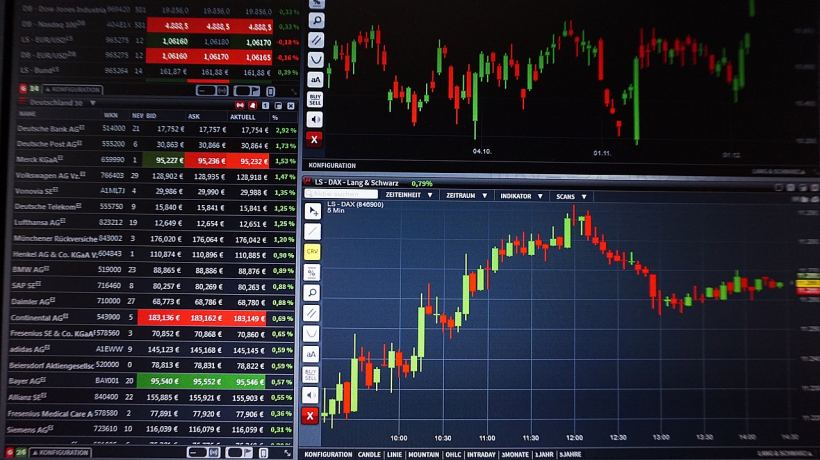Introduction
Trading can be stressful and challenging, especially if you’re starting. With so many stocks, currencies, and markets to choose from, it can feel like an uphill battle trying to make your trades lucrative.
But successful trading isn’t about luck – it’s about having the right strategies. Knowing which rules to follow is vital for any trader hoping to achieve financial success.
In this article, we’ll share seven crucial rules you should abide by when investing in the stock market or engaging in other trading activities.
Understand the Markets
In the world of trading, understanding the markets is paramount for success. With a clear understanding of the various factors and trends that drive market movements, even the most seasoned traders can find themselves able to stay afloat. To truly excel in this highly competitive field, it’s essential to take the time to study and research the markets, to stay up-to-date with the latest news and trends, and to always be ready to adapt to changing conditions.
Armed with a comprehensive understanding of the markets, you can be a successful trader and achieve your financial goals. Remember, knowledge is power, and knowledge of the markets is the key to success in trading.
Study Trading Glossary Terms
A key aspect of trading is having a deep understanding of the various financial terms and concepts used in the industry. A firm grasp of these terms will enable you to make sound decisions, analyse data more effectively, and communicate with other traders more efficiently. It is why it’s essential to familiarise yourself with the trading glossary. By learning about the different types of orders, leverage strategies, risk management procedures, and more, you can equip yourself with all the knowledge needed to thrive in this field.
You should also be aware of the different regulatory bodies that oversee trading activity and their respective rules and regulations. This knowledge will allow you to comply with all relevant laws and ensure your trades are conducted according to the highest standards.
Manage Risk
Risk management is a crucial part of trading, as it helps you limit losses during bad trades and maximise gains when the market performs strongly. To do this successfully, it’s essential to set clear limits on how much you’re willing to risk in each trade based on your overall portfolio objectives. It will ensure you’re not overexposing yourself to any asset or sector. It’s also essential to create stop-loss orders that close out positions if they start going against you too severely.
Similarly, always remember to remove profits once your target price has been reached. By adhering to these risk management rules, you can better protect your capital while reaping the rewards from successful trades.
Set Goals
Having a clear set of goals is essential for any trader. With them, staying focused and motivated on the path towards success can be more accessible. To get started, define your overall objectives for trading. Are you looking to make potential short-term profits or long-term investments? Do you want to gain exposure to specific sectors or markets? Once you better understand what you’re trying to achieve, set attainable goals that will help keep you on track.
These could include specific returns from trades over time and other non-financial targets such as learning new skills or expanding your knowledge base. Having these clearly defined goals in mind will make it easier for you to stay disciplined and stick with your plan no matter how the markets are performing.
Research Trades Thoroughly
It’s important to remember that trading is an information-driven activity. To make successful trades, you need to know the company or asset you’re investing in inside and out. It means researching it thoroughly and conducting a detailed analysis of its historical performance, news coverage, financial statements, etc. Only when you completely understand the security can you determine whether or not it’s worth investing in.
By taking this approach, you can make well-informed decisions and reduce your risk of sustaining heavy losses due to bad trades. Remember that past performance doesn’t indicate future returns, so don’t put all your eggs in one basket.
Use Technical Analysis
In addition to conducting fundamental analysis, it’s essential to use technical analysis when trading. Technical analysis involves looking at the past performance of a security to determine where its price might go in the future. This type of analysis uses charts and indicators such as moving averages and support/resistance levels to gauge market sentiment and make more accurate predictions about an asset’s potential returns.
Using fundamental and technical analysis together, you’ll get a comprehensive view of the markets and use this insight to inform your trading decisions.
Monitor Positions
Once you’ve opened a position, it’s essential to keep an eye on it and monitor its performance. It means regularly checking the security price, assessing how your trades are faring against the benchmarks you set for yourself, and staying up-to-date with any relevant news stories or market changes. If necessary, be prepared to adjust your positions in response to new information to achieve better returns.
In addition, remember to review your trading activity at regular intervals. Take the time to look back through all your trades and evaluate what went right and wrong. From there, you can identify areas for improvement and make more informed decisions.







